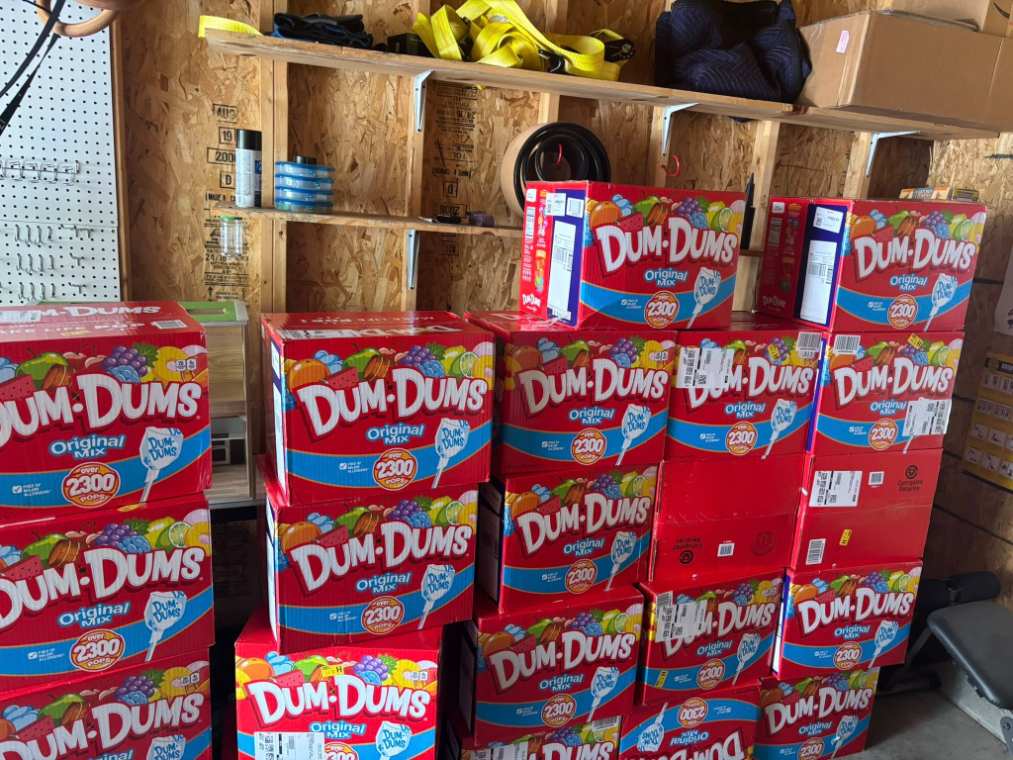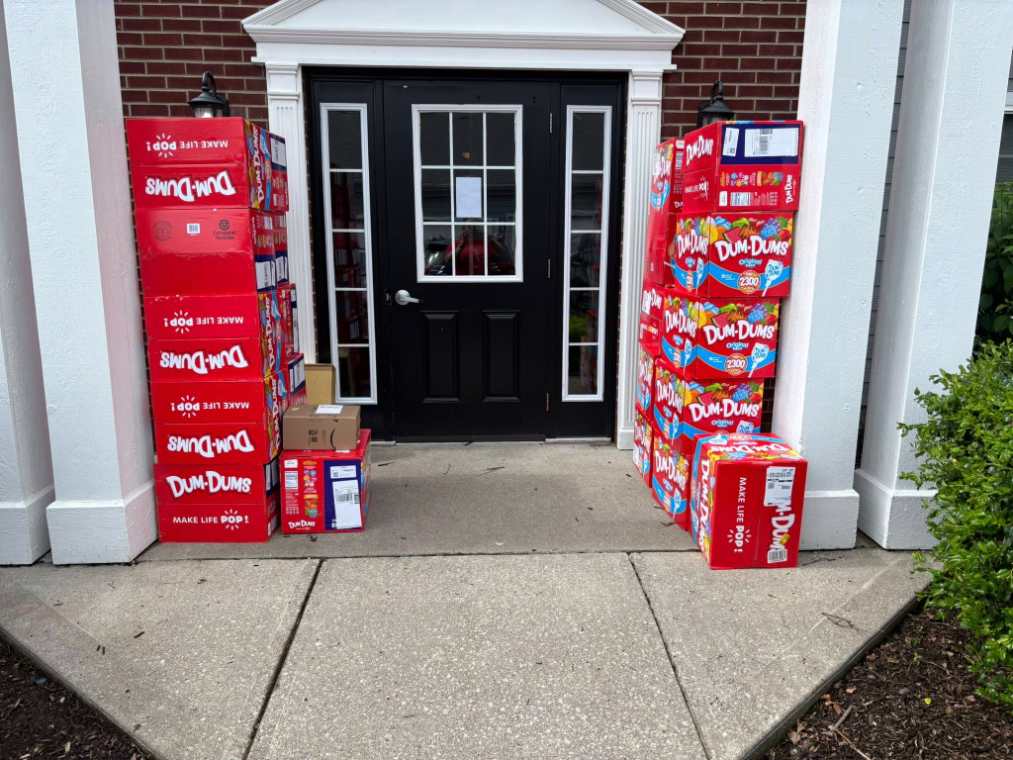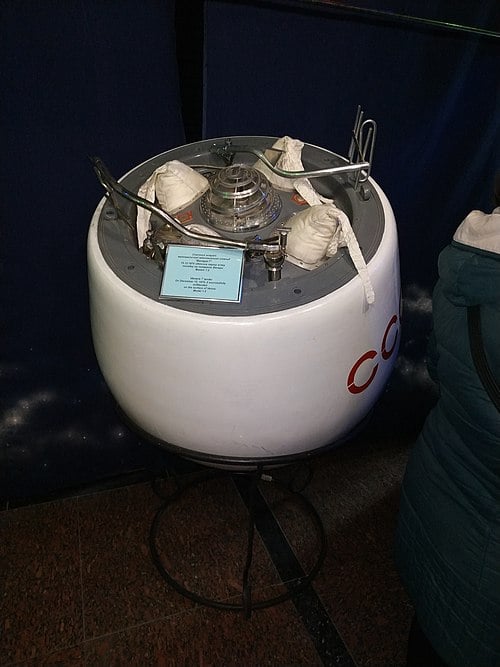When Holly LaFavers checked her bank account in early May 2025, she got the shock of her life. Her 8-year-old son Liam had accidentally ordered 30 cases of Dum-Dum lollipops on Amazon using her phone – that’s roughly 70,000 individual suckers – totaling a whopping $4,200 charge.
“I just about fainted,” Holly told reporters after discovering her account was in the red.
What started as a well-intentioned plan for a children’s carnival quickly turned into a candy crisis that has sparked conversations about online shopping safety, pediatric impulse control disorders, and the power of community support.
The Accidental Order: How 70,000 Lollipops Showed Up at One Kentucky Home
On May 4, 2025, 22 cases of Dum-Dums arrived at the LaFavers’ doorstep in Lexington, Kentucky, before Holly could stop the delivery. Each case contained approximately 2,340 lollipops, with retail pricing around $130-$135 per case according to reports.
Liam, who has fetal alcohol spectrum disorder (FASD), had simply wanted prizes for a carnival he planned for friends. “He was being friendly,” his mother explained to AP News.
FASD affects an estimated 1-5% of U.S. first-graders, according to data from the National Institute on Alcohol Abuse and Alcoholism (NIAAA). The condition can cause difficulties with self-regulation, including “erratic changes in mood, impulse control, and being easily over-stimulated,” which persist throughout life.
Holly managed to intercept and return eight cases at the post office, but was still stuck with 22 boxes and a massive bill.

From Financial Panic to Sweet Solution
After the initial shock, Holly turned to social media and local news outlets for help. In her desperate Facebook post, she wrote: “Hi Everyone! Liam ordered 30 cases of Dum-Dums and Amazon will not let me return them. Sale: $130 box. Still sealed.”
She later explained the delivery complications: “I contacted Amazon as soon as I realized what had happened. They originally told me to reject the delivery and they would refund my money. The driver never knocked or rang the doorbell so now they will not take them back.”
Her Facebook appeal worked surprisingly well – local banks, doctors’ offices, and neighbors quickly purchased many of the unopened boxes. Holly posted an update: “Thank you everyone who has offered to buy a box (or two) or shared the post. I believe they are all sold!! I will get them to Somerset as quickly as I can.”
The remaining lollipops were donated to Immanuel Baptist Church in Somerset, Kentucky on May 6, turning a potential financial disaster into a community giving opportunity.
“Somerset always shows up when you need support!!” Holly wrote appreciatively.
The story gained national attention, and Amazon eventually issued a full refund. “After a long day of working with the bank and talking to a few news stations Amazon called and they are refunding my money!!!” Holly updated her followers. An Amazon spokesperson stated they were glad to “turn a sticky situation into something sweet.”
Even Spangler Candy Company, the manufacturer of Dum-Dums, joined in with a lighthearted response. Their CEO reportedly offered Liam “a future job interview” in 10-15 years and extended “an open invitation for a factory tour.”
A Look at Lollipop Ingredients
Standard lollipops like Dum-Dums contain several ingredients that nutritionists and health professionals recommend consuming in moderation, especially for children. According to Spangler Candy Company’s own product information, Dum-Dums contain sugar, corn syrup, citric acid, malic acid, salt, artificial flavors, and color additives (including Red 40, Yellow 6, Yellow 5, and Blue 1).
Similar Posts
The American Academy of Pediatrics recommends limiting added sugars in children’s diets, noting that excessive sugar consumption is linked to dental issues and other health concerns.
The FDA has approved the food dyes commonly used in lollipops, though some consumers and health advocates have raised questions about synthetic food colorings in children’s products. Countries like the United Kingdom and the European Union have implemented stricter regulations on certain food dyes compared to the United States.
Dental professionals also note that hard candies like lollipops can be particularly concerning for dental health due to prolonged exposure to sugar.
Digital Safety 101: Preventing Accidental Online Shopping Sprees
This candy catastrophe highlights important digital safety practices for families, especially those with children who face impulse control challenges:
Amazon offers several built-in safeguards that can help prevent similar situations:
- Disable 1-Click Ordering in Account Settings under “Purchase Preferences”
- Turn off In-App Purchasing in the Amazon Appstore
- Adjust Buy Now Defaults to require additional verification steps
- Disable Alexa Voice Purchasing in the Alexa app settings
These simple steps create multiple layers of protection against accidental orders.
The Bigger Picture: Kids and E-Commerce
The LaFavers’ experience isn’t isolated. According to 2024 research, children eight and under spend an average of 2.48 hours per week shopping online, and 16% of parents surveyed believe their kids show signs of e-commerce addiction.
Similar incidents have made headlines before. In 2022, a Texas toddler ordered 31 McDonald’s cheeseburgers through DoorDash, costing $91.70.
Research suggests that children with FASD often face challenges with impulse control and understanding cause-and-effect relationships. The National Institute on Alcohol Abuse and Alcoholism (NIAAA) indicates that prenatal alcohol exposure remains a leading preventable cause of neurodevelopmental disorders in the United States.
For families dealing with impulse control disorders, experts recommend multi-layered digital safety protocols and open conversations about online shopping boundaries.
How a Lollipop Mishap Created Community Connections
What could have been a $4,200 financial nightmare ultimately became something positive. The LaFavers’ story shows how digital mishaps can transform into opportunities for community support and increased awareness about both online safety and FASD.
Holly and Liam’s experience serves as a practical case study in digital parenting, especially for families with children who face extra challenges with impulse control. It also demonstrates how platforms like Amazon can improve user experience by designing more robust parental controls.
For now, the LaFavers family has plenty of sweet memories – and likely, a new password on their Amazon account.


















